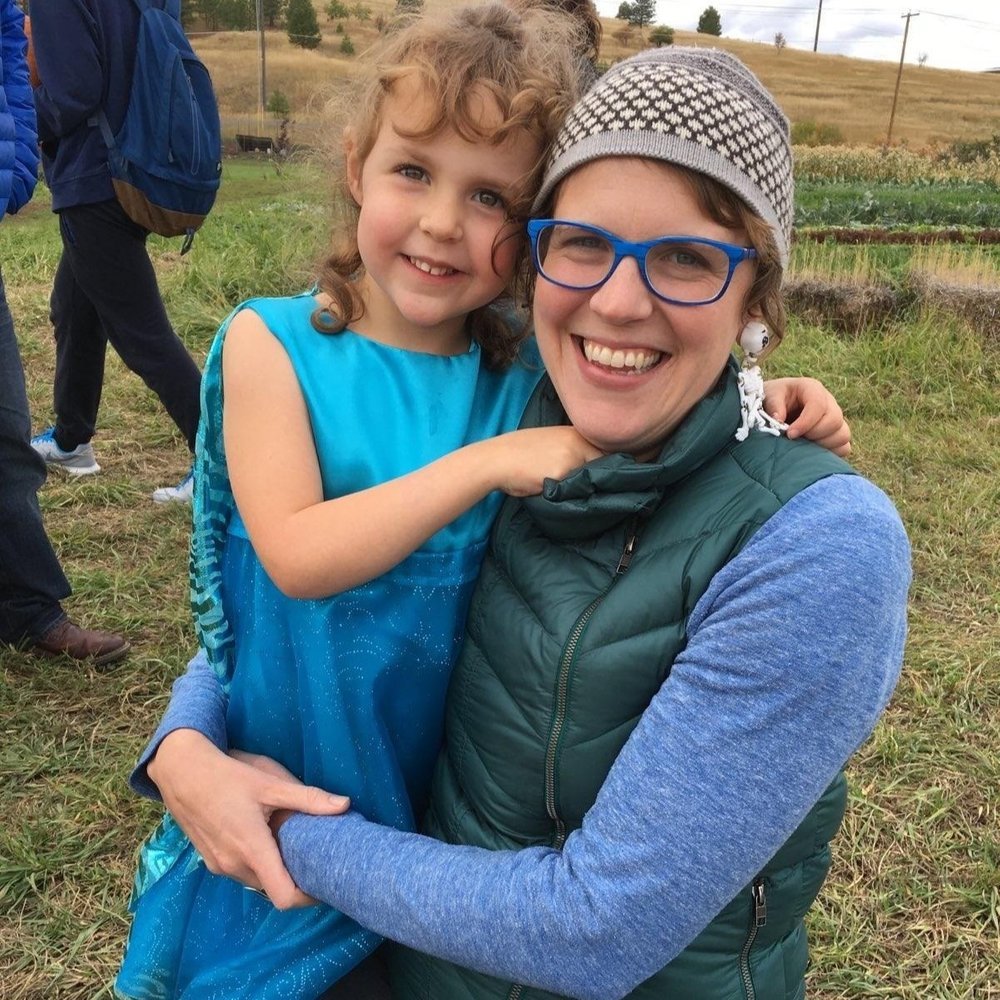Living Climate Change on Our Urban Farms
Tracy Potter-Fins, owner of County Rail Farm, started wearing a respirator in 2017 to protect herself from wildfire smoke.
By Genevieve Jessop Marsh. This article originally appeared in the Missoula Current. Republished with permission.
I felt bleak when I arrived at the PEAS Farm. It was the second week of thick smoke and only the third week of July.
“I keep thinking, at least it’s not 2017,” said Peter, one of the farmers. “Nothing compares.”
It was 2017 when I saw the picture of Tracy Potter-Fins, owner of County Rail Farm in Huson, Montana, donning her respirator while she farmed, fields stretching out behind her. Seeing that picture was a milestone for me. This is what it means to farm in climate change.
I work at Garden City Harvest, and while I’m not a farmer, I work among many. In Garden City Harvest’s 25 years, we’ve seen Missoula county and nearby farmlands change USDA hardiness zones (based on average nightly low temperatures) in many places by a full zone. Western Montanans can now grow peppers without greenhouses, along with eggplants and abundant tomatoes.
But it comes at a price. Laura Legnick of Cultivating Resilience, LLC, says it well, “Everyone who eats needs to understand that this generation of farmers is facing unprecedented change.”
I sat down with Greg Price, farmer at Garden City Harvest’s River Road Farm, to talk about his over 20 seasons with us. This year, the irrigation ditch water that Greg depends on dried up for the first time, primarily due to low river levels.
Last year, with the cool wet temperatures in spring and early summer, blight took many of the tomatoes. In 2018, 2019, and 2020 we had relatively cool wet springs and early summers in fact, and a new fungus started infesting the onions. At the end of the season in 2018, there was a deep cold snap before much of the fall harvest was out of the fields. Our winter storage crops were at risk and everyone pulled long hours to get the food out of the fields.
“If you were a farmer back before we had the ability to predict the weather,” Greg told me, “And you had this kind of fast paced change, you’d have nothing to eat for the winter.”
As with the crops, the weeds get extra time to seed and new invasives put roots down and outcompete our crops. Winters are often not cold enough to kill off insects and new insects can exist here that wouldn’t survive before.
And then there is fire. Farmers work outside, breathing in the smoke soup, to grow food that our members, partners, and community depend on. This summer, many of our farmers joined Tracy in wearing masks to protect themselves from the smoke. The land and our bodies are interdependent, inexorably connected, and our food, time and again, shows us this.
Caroline Stephens, University of Montana Lecturer, teaches students at the PEAS Farm. She confirms the difficulty of working in the smoke, especially for the students, because they are under stress, “some of which may be linked to climate grief.”
But here’s the part I love. Even in the midst of all of this sadness, grief, and unprecedented change, there is also healing and hope. Caroline says that she has heard repeatedly how, “Farming at PEAS is healing for many students and is good for their mental health.”
And that makes sense on a few levels. As a few studies have suggested, working in the soil triggers a similar reaction in the brain as Prozac. We see this daily in our work. From the volunteers who join us in the fields, to the transformation of teens who work their first job at one of our farms, it helps to be part of a solution; to have a place to think and to feel and to connect to others who value the soil and the food it produces inspires you and creates hope.
Along with our fellow, locally based farmers around the Missoula area (and the world for that matter), we are helping make adaptations and prepare for an unpredictable world. We save seed. We grow a polyculture of crops, not depending on just one. We feed the soil, an essential tool in climate change adaptation, with cover crops and crop rotation.
When the pandemic hit, we felt the gravity of what local food offers our community. When larger systems fail, we need local suppliers and local green space to grow food. We need to build soil health. These things take time.
We still have work to do to be a resilient community. But our farmers give me hope. As farmer Dave says, “Farmers are a creative breed and necessity is often the mother of invention.”
—
Genevieve Jessop Marsh is a mother, partner, messy cook, and the Outreach and Impact Director for Garden City Harvest. She enjoys adventures with her family of three (plus Sage the wonder dog) that require a good set of walking shoes. And, of course, tinkering in the garden and always making a mess in the kitchen.

